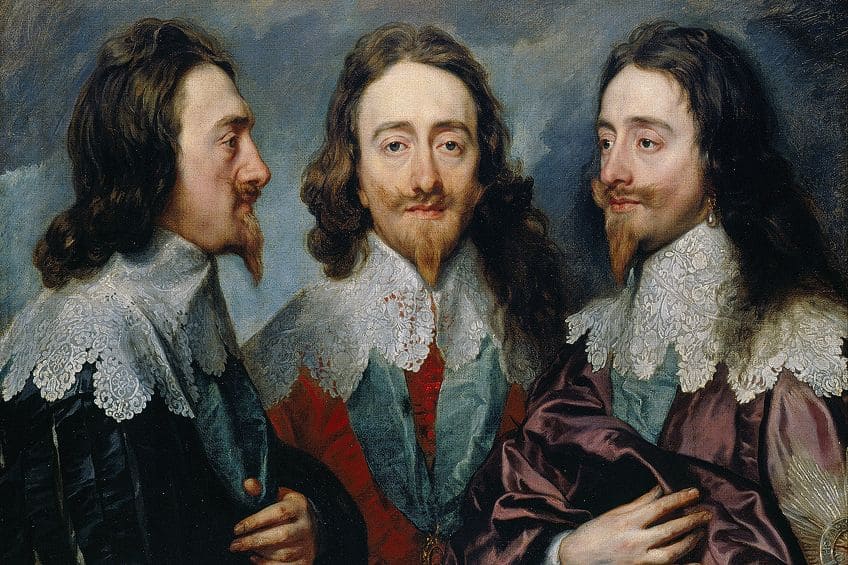Famous Baroque Artists – A List of the Best Baroque Painters Ever
The emergence of the Baroque cultural period introduced us to some of the best creatives of Western art history. The Baroque style is associated with dramatic design elements across multiple disciplines in 17th-century Europe, including high-contrast scenery in painting and an exploration of various subject matter. This article will outline the top 15 most famous Baroque-period artists of all time and include some of their most notable works.
Contents
- 1 An Introduction to Baroque-Period Art
- 2 Top 15 Most Famous Baroque Artists
- 2.1 Caravaggio (1571 – 1610)
- 2.2 Peter Paul Rubens (1577 – 1640)
- 2.3 Georges de La Tour (1593 – 1652)
- 2.4 Artemisia Gentileschi (1593 – 1656)
- 2.5 Nicolas Poussin (1594 – 1665)
- 2.6 Francisco de Zurbarán (1598 – 1664)
- 2.7 Gian Lorenzo Bernini (1598 – 1680)
- 2.8 Anthony van Dyck (1599 – 1641)
- 2.9 Diego Velázquez (1599 – 1660)
- 2.10 Philippe de Champaigne (1602 – 1674)
- 2.11 Rembrandt (1606 – 1669)
- 2.12 Johannes Vermeer (1632 – 1675)
- 2.13 Mary Beale (1633 – 1699)
- 2.14 Elisabetta Sirani (1638 – 1665)
- 2.15 Louise Moillon (1610 – 1696)
- 3 Frequently Asked Questions
An Introduction to Baroque-Period Art
The Baroque period in Western art history is an art style that originated between the 16th and 17th centuries and lasted well into the 18th century. The Baroque art style was characterized by elements that strayed from the traditional classical representation of various subject matter as seen in classical antiquity and evoked a sense of drama and movement.
Many Baroque painters incorporated rich colors such as deep shades of red and brown, and high-contrast elements to focus on highlighting subjects using intense shadows.
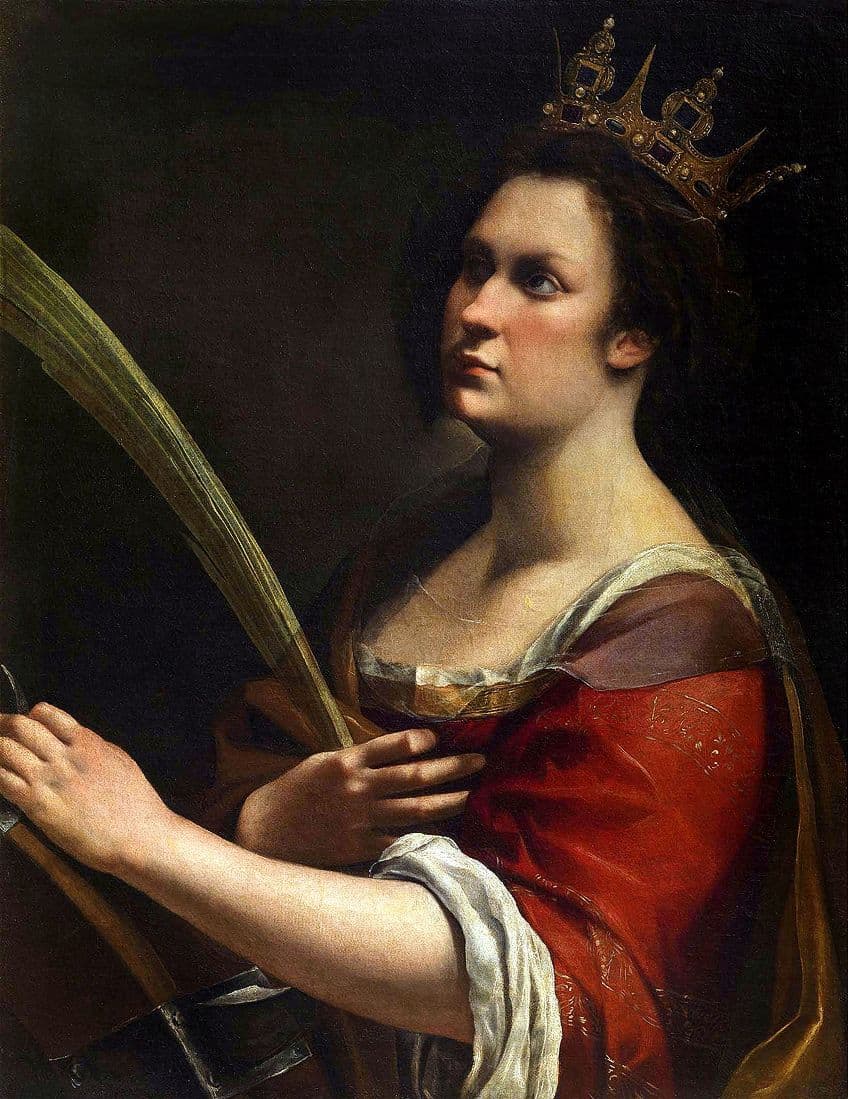
Baroque painters utilized painting techniques such as the chiaroscuro method to create bold contrasts between light and dark. The majority of Baroque subject matter included landscapes, portraits, genre paintings, still lifes, and history paintings. Baroque paintings also emphasize the most dramatic moment of a scene or narrative and aim to capture the emotion of a subject as opposed to simply a representation of it.
This was what made the artistic style and subsequent movement so influential and important to the progression of art in Europe and the rest of the world.
Top 15 Most Famous Baroque Artists
The Baroque style was initially referred to in a derogatory manner to highlight the excess in drama or contrast in an artwork. The term was also used to describe artwork that displayed an unnecessary emphasis on details or “eccentric redundancy” and was later reinvented by the Swiss art historian Heinrich Wölfflin in 1888.
Wölfflin identified the nature of Baroque elements in art as antithetic to the art of the Renaissance.
The art style was not seen in a positive light until Wölfflin drew attention to its potential and importance in contrast to common Renaissance ideals. Below, we will examine some of the most famous Baroque-period artists who championed the art style and bolstered the movement into popularity.
Caravaggio (1571 – 1610)
| Artist Name | Michelangelo Merisi da Caravaggio |
| Date of Birth | 29 September 1571 |
| Date of Death | 18 July 1610 |
| Nationality | Italian |
| Places of Residence | Milan, Rome, Naples, Malta, Sicily |
| Medium | Painting |
| Famous Artworks | ● Bacchus (c. 1596) ● Narcissus (1597 – 1599) ● Medusa (1598) ● Judith Beheading Holofernes (1598 – 1599) ● The Calling of Saint Matthew (1599 – 1600) |
One cannot discuss the Baroque period without mentioning one of its leading artists, Caravaggio. Born as Michelangelo Merisi da Caravaggio in 1571, Caravaggio became one the best Italian Baroque painters in European history. He was particularly famous for applying the chiaroscuro technique in his paintings, which involved the presence of dark shadows to create a “blinding shaft of light” to highlight the subject.
Caravaggio was trained in Milan and recognized as an eccentric character with quite a temper.
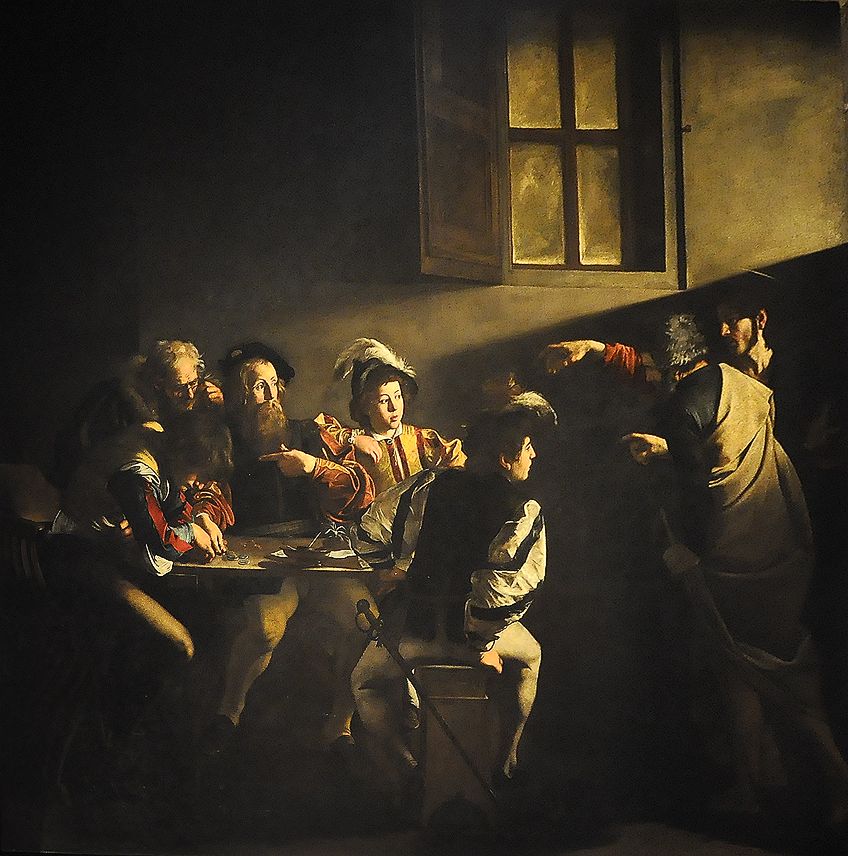
He often produced work at a fast pace and was known to paint directly on the canvas. His mastery of the chiaroscuro technique paved the way for the development of tenebrism in painting, which emphasized dramatic illumination and served as a heightened form of the chiaroscuro technique.
Although the method was in existence long before Caravaggio gained his fame, it was the artist himself who was credited with pioneering the method and its popularity.
Towards the end of the artist’s career, his temper caught up with him and resulted in a murder charge. Caravaggio was forced to take refuge in Naples, where he encountered another life-altering event, which left him with a disfigured face. The cause of his death remains unknown; however, it is known that the artist displayed erratic behavior before his death in 1610, which was potentially an indication of mental illness.
Peter Paul Rubens (1577 – 1640)
| Artist Name | Sir Peter Paul Rubens |
| Date of Birth | 28 June 1577 |
| Date of Death | 30 May 1640 |
| Nationality | Flemish |
| Places of Residence | Belgium |
| Mediums | Painting, design |
| Famous Artworks | ● The Elevation of the Cross (1610) ● Prometheus Bound (1612) ● Massacre of the Innocents (1612) ● The Disembarkation at Marseilles (1625) ● The Three Graces (1635) |
Peter Paul Rubens was one of the most influential Flemish Baroque artists of the 17th century. Rubens was famous for his altarpiece artworks, which served as a demonstration of his unique approach to the Baroque-period painting style defined by an emphasis on movement and sensuality.
Rubens’ works were extremely influential to many artists and he even held a massive workshop in Antwerp that generated many paintings and attracted the attention of noble members of society across Europe.

Rubens also served as a diplomat who was knighted twice by Philip IV and Charles I in Spain and England. The majority of his commissioned pieces were of historical subject matter, hunting scenes, and classical mythology. Aside from painting, Rubens was also a designer and authored a book with illustrations of the different palaces in Genoa, which was published in 1622.
Additionally, Rubens was also invested in collecting art and was known to have sold numerous art objects as an art dealer to George Villiers, the first Duke of Buckingham.
Rubens is both celebrated and criticized for his depictions of the female nude in mythology, which emphasizes the female body as a reflection of beauty, temptation, and sexuality as seen through the male gaze. Rubens also contributed to the expansion of the way women were represented in art. He demonstrated this “expansion” in his painting cycle of Marie de Medici, where he portrayed her in multiple roles: as a wife, diplomatic regent, virgin, and consort. This approach helped broaden the perspective through which Marie de Medici was seen and acknowledged.
Georges de La Tour (1593 – 1652)
| Artist Name | Georges de La Tour |
| Date of Birth | 13 March 1593 |
| Date of Death | 30 January 1652 |
| Nationality | French |
| Places of Residence | Lorraine, France |
| Medium | Painting |
| Famous Artworks | ● St. Jerome (1630 – 1632) ● Magdalene with the Smoking Flame (1640) ● Nativity (1644) ● The Smoker (1646) ● The Education of the Virgin (1650) |
Georges de la Tour was a famous French Baroque painter who was well-known for painting religious subject matter using the chiaroscuro technique by candlelight. Many of La Tour’s paintings receive much adoration for their depiction of nocturnal light, which brings a sense of drama as characteristic of Baroque painting.
Influenced by Caravaggio, La Tour focused on creating a sense of stillness via simplicity in composition and form.
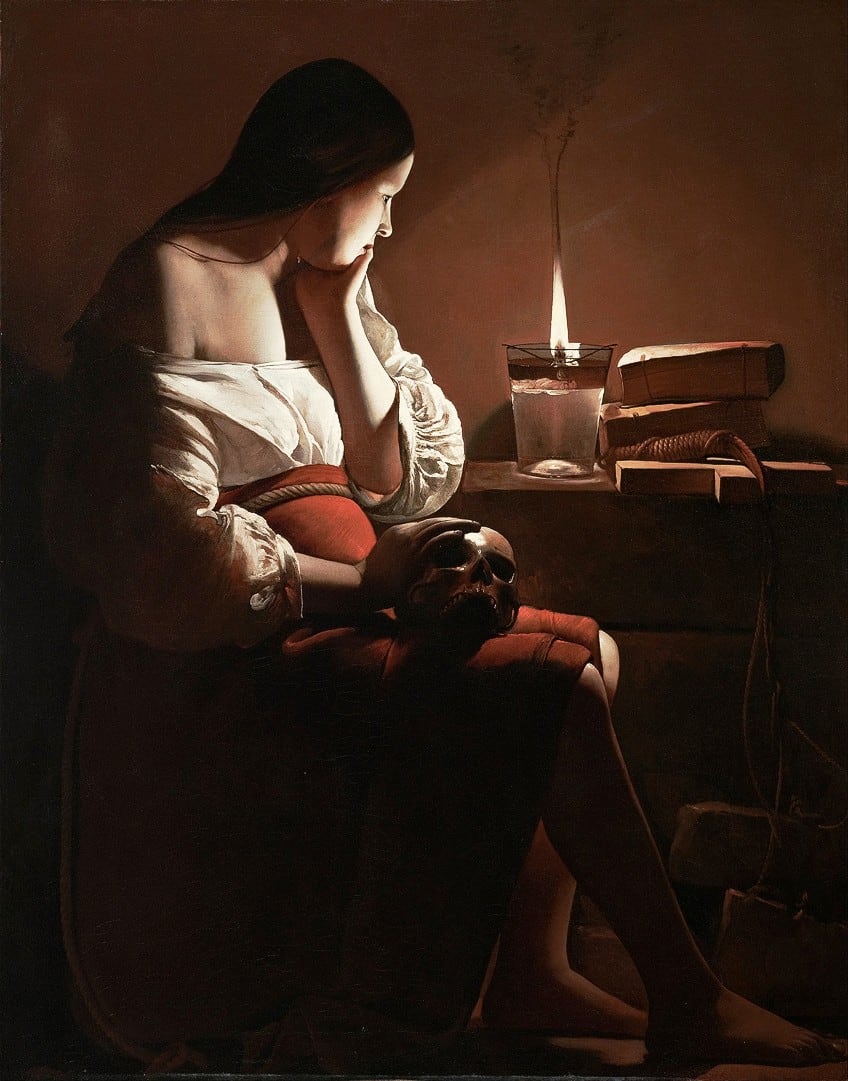
The artist often painted several versions of the same theme but was unfortunately tossed under the rug as an artist and overshadowed by the successes of his contemporaries. Many of his works showcase his preferential color palette, which included Venetian reds with dark shadows and subjects made visible by candlelight.
Artemisia Gentileschi (1593 – 1656)
| Artist Name | Artemisia Gentileschi (Artemisia Lomi) |
| Date of Birth | 8 July 1593 |
| Date of Death | c. 1656 |
| Nationality | Italian |
| Places of Residence | Rome, Naples, England |
| Medium | Painting |
| Famous Artworks | ● Susanna and the Elders (1610) ● Judith Slaying Holofernes (1612 – 1613) ● Danae (1612) ● Lucretia (1623 – 1625) ● Venus and Cupid (1625 – 1630) |
Artemisia Gentileschi is one of the most underrated Italian Baroque artists of the 17th century, whose artistic reputation was overshadowed by her participation in her rape trial. Gentileschi was influenced by Caravaggio and by the young age of 15 she was already on her way to producing professional works on a similar level.
Gentileschi was also the first woman to join the Accademia di Arte del Disegno and grew an international clientele throughout her lifetime.

Gentileschi’s subject matter was diverse and covered many subjects, including religious iconography, allegory, women, as seen from different perspectives, suicide, and mythological figures. The artist was also well-acquainted with the Italian astronomer Galileo Galilei as well as prominent figures such as Cosimo II de Medici.
Gentileschi joined the royal court of Charles I in England alongside her father in 1638, where she produced one of her most famous paintings, Self-Portrait as the Allegory of Painting (1638 – 1639).
Nicolas Poussin (1594 – 1665)
| Artist Name | Nicolas Poussin |
| Date of Birth | 15 June 1594 |
| Date of Death | 19 November 1665 |
| Nationality | French |
| Places of Residence | Paris, Rome |
| Medium | Painting |
| Famous Artworks | ● The Death of Germanicus (1626 – 1628) ● The Adoration of the Golden Calf (1633 – 1634) ● A Dance to the Music of Time (1634 – 1636) ● The Triumph of Pan (1636) ● The Rape of the Sabine Women (1637 – 1638) |
Nicolas Poussin was a prolific leader of the classical French Baroque period who was famous for his use of lines in painting to provide clarity to the composition. Poussin painted for many French and Italian collectors and covered themes related to mythological and religious scenery, landscapes, and traditional subject matter.
Poussin spent the majority of his career developing his artistic talent in Rome, where he carefully studied the works of influential Baroque artists and Renaissance painters, including Raphael.

Poussin was an ally to all in the Roman creative community and gained the acquaintance of many prominent patrons, including Cardinal Francesco Barberini and Cassiano dal Pozzo. In 1640, Poussin was almost convinced to return to France to paint for the King.
He did make the trip but after less than a year, he returned to Rome due to the massive workload.
Francisco de Zurbarán (1598 – 1664)
| Artist Name | Francisco de Zurbarán |
| Date of Birth | 7 November 1598 |
| Date of Death | 27 August 1664 |
| Nationality | Spanish |
| Places of Residence | Seville; Madrid, Spain |
| Mediums | Painting, drawing |
| Famous Artworks | ● The Crucifixion (1627) ● Saint Serapion (1628) ● A Cup of Water and a Rose (c. 1630) ● The Young Virgin (1633) ● Still Life with Lemons, Oranges and a Rose (1633) ● Saint Francis in Meditation (1639) ● Agnus Dei (1640) |
Dubbed the Spanish Caravaggio, Francisco de Zurbarán was a champion in Baroque still life painting and a specialist in painting subject matter related to religious figures. Like Caravaggio, Zurbarán excelled at applying the chiaroscuro effect and was talented at drawing with charcoal from an early age.
Zurbarán often frequented Seville and later Madrid, where he created some of his best works, as listed below.
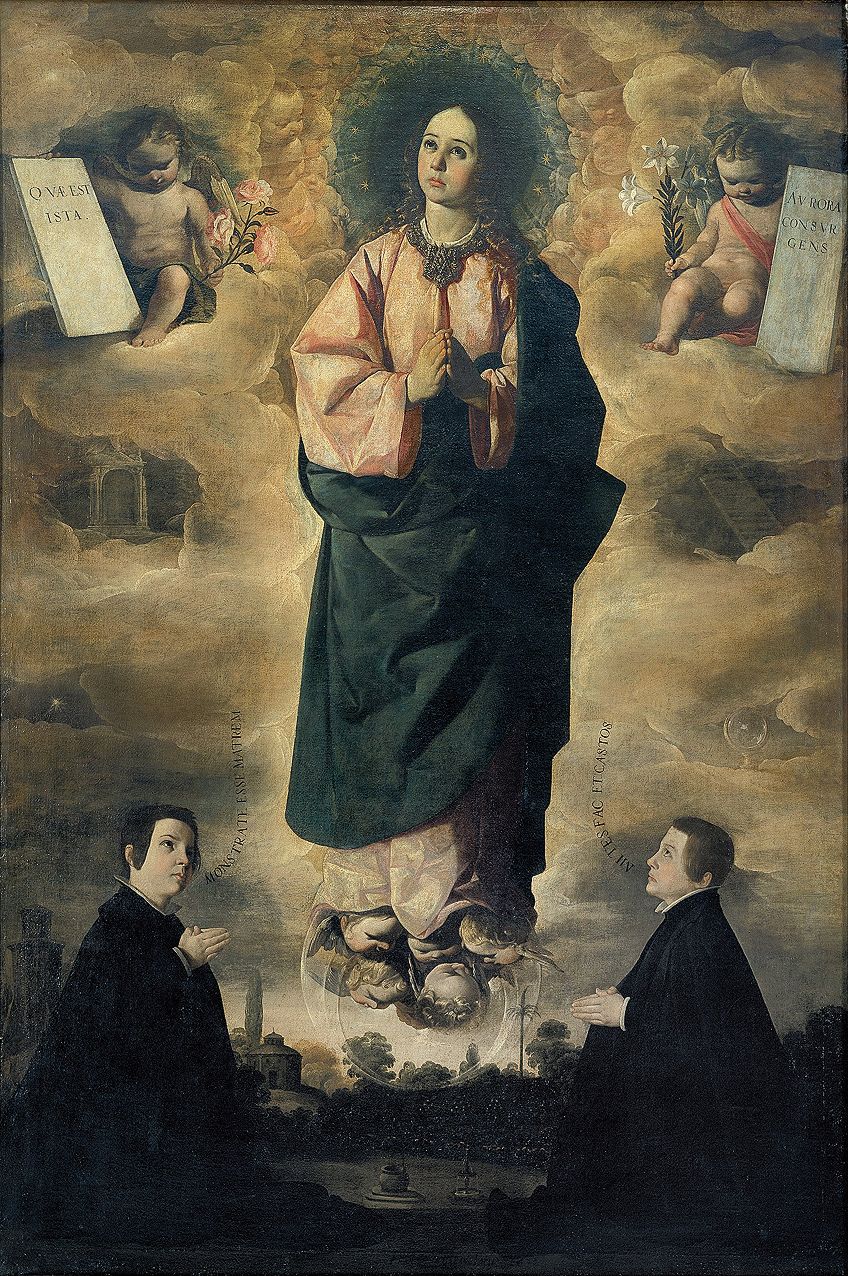
Throughout his lifetime, Zurbarán married three times. His largest commissioned work was the 1631 altarpiece, The Apotheosis of Saint Thomas Aquinas, which is currently housed at the Museum of Fine Arts of Seville. In 1987, Zurbarán was also the focal artist of a major exhibition by the New York Metropolitan Museum of Art, which also traveled to Paris at the Galeries Nationales du Grand Palais in 1988.
Gian Lorenzo Bernini (1598 – 1680)
| Artist Name | Gian Lorenzo Bernini (Giovanni Lorenzo) |
| Date of Birth | 7 December 1598 |
| Date of Death | 28 November 1680 |
| Nationality | Italian |
| Places of Residence | Naples, Rome |
| Mediums | Sculpture, drawing, architecture, painting, design |
| Famous Artworks | ● The Abduction of Proserpina (1621 – 1622) ● David (1624) ● Apollo and Daphne (1625) ● Saint Andrew and Saint Thomas (1627) ● Self-Portrait (1635) ● The Chair of Saint Peter (1666) |
A man with a vision for the future credited with bringing together harmony within the visual arts of the 17th century, Gian Lorenzo Bernini is one of the most popular and respected sculptors and architects of the Baroque era.
In addition to establishing himself as a master of painting, drawing, design, and city planning, Bernini was also incredibly talented at sculpture and is known to have sculpted some of the most famous sculptures in the world.
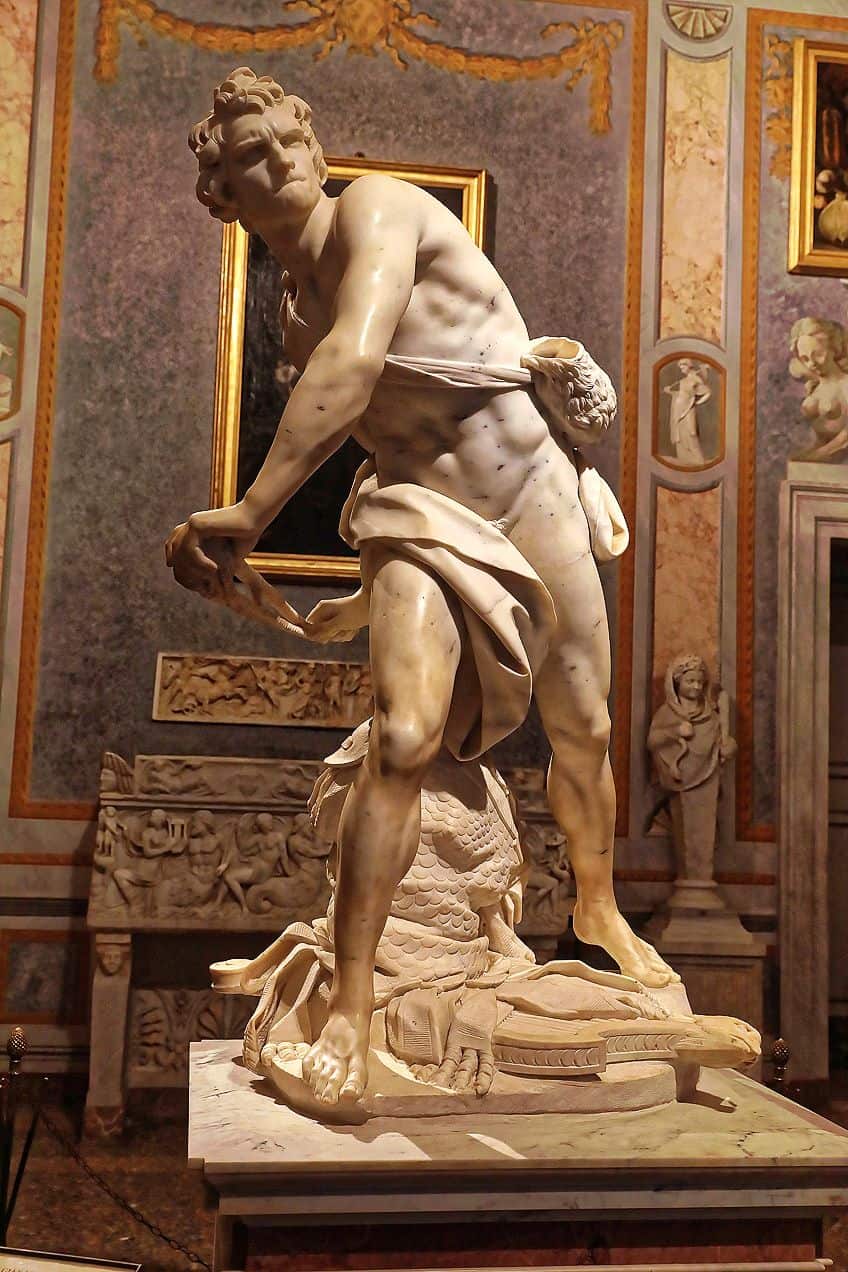
Bernini’s work was considered a culmination of sculpture, architecture, and painting. His artworks possess the dramatic flair of the Baroque style coupled with the technical prowess of design and structure. Bernini was recognized from the early age of eight as a prodigy of the arts and received notable patrons such as Cardinal Scipione Borghese, Pope Gregory XV, Cardinal Maffeo Barberini, Alexander VII, and Clement IX.
Anthony van Dyck (1599 – 1641)
| Artist Name | Sir Anthony van Dyck |
| Date of Birth | 22 March 1599 |
| Date of Death | 9 December 1641 |
| Nationality | Flemish |
| Places of Residence | London, Flanders, Southern Netherlands, Italy, England |
| Mediums | Painting, drawing, etching, watercolor |
| Famous Artworks | ● The Battle of the Amazons (1615; Sir Peter Paul Rubens) ● Portrait of Cornelis van der Geest (c. 1620) ● Saint Rosalie Interceding for the Plague-stricken of Palermo (1624) ● Self-Portrait with a Sunflower (1632 – 1633) ● Charles I at the Hunt (1635) ● Charles I in Three Positions (1635) ● Five Eldest Children of Charles I (1637) |
Sir Anthony van Dyck is one of the most well-known Flemish Baroque painters whose achievements were documented in multiple countries, including Italy, the Southern Netherlands, and England. The Brabantian Flemish artist was one of the best court painters in England and a top student of Sir Peter Paul Rubens.
Van Dyck was also well acquainted with Diego Velázquez who served as a court portraiture artist and helped revolutionize the genre of English portraiture.
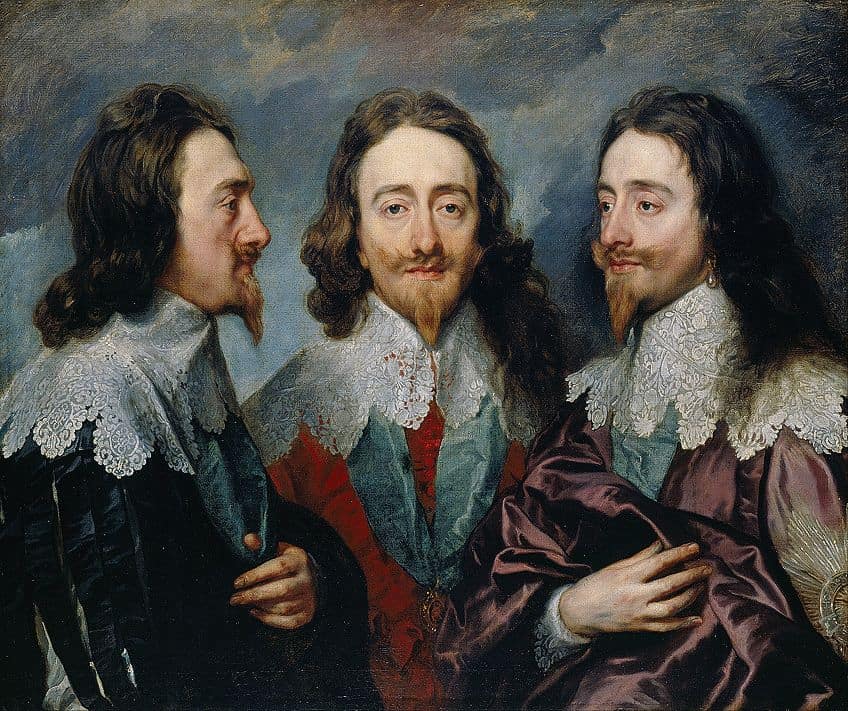
Van Dyck’s best works are his portraits for the court of King Charles I and royal associates. The artist is also famous for having a facial hair style named after him called the Van Dyke beard, which propelled his legacy into the modern era.
Diego Velázquez (1599 – 1660)
| Artist Name | Diego Rodríguez de Silva y Velázquez |
| Date of Birth | 6 June 1599 |
| Date of Death | 6 August 1660 |
| Nationality | Spanish |
| Places of Residence | Seville, Madrid; Naples, Venice, Rome, Cento, Ferrara, Bologna, Loreto |
| Medium | Painting |
| Famous Artworks | ● Old Woman Frying Eggs (1618) ● La Rendición de Breda (1634 – 1635) ● Rokeby Venus (1647) ● Portrait of Innocent X (1650) ● Portrait of Juan de Pareja (1650) ● Las Meninas (1656) |
Born in 1599, Diego Velázquez was one of the best Spanish Baroque painters of the 17th century. Velázquez operated under the patronage of King Philip IV of Spain and Portugal and was a master of tenebrism in painting. He often prioritized elements of individualism in his art through bold brushwork.
Velázquez created many portraits for the Spanish court, including historical paintings and scenes with people from everyday society.
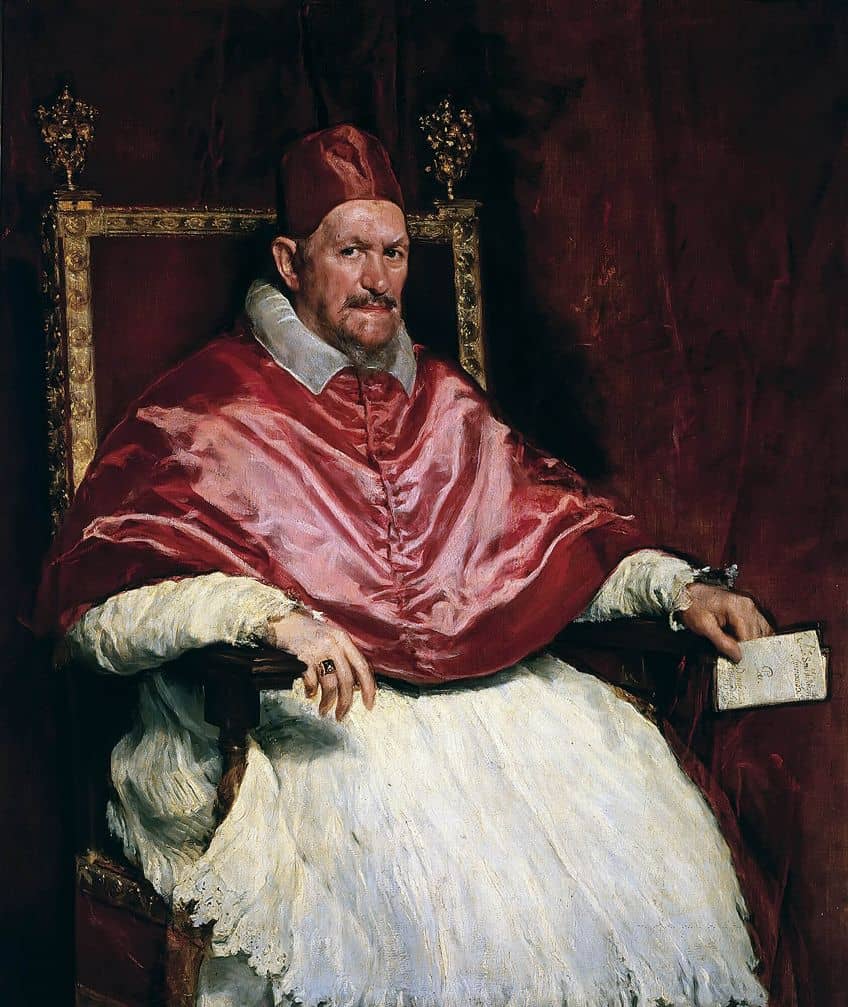
The baroque painter had a significant impact on artists of the 19th century, including artists like Salvador Dalí and Pablo Picasso who admired the artist’s talent in composition. The majority of Velázquez’s works are stored under the royal collection of the Spanish court and can today be viewed at the Museo del Prado.
Philippe de Champaigne (1602 – 1674)
| Artist Name | Philippe de Champaigne |
| Date of Birth | 26 May 1602 |
| Date of Death | 12 August 1674 |
| Nationality | French |
| Places of Residence | Brussels; Paris, France |
| Medium | Painting |
| Famous Artworks | ● Triple Portrait of Cardinal de Richelieu (1640) ● The Dream of Saint Joseph (c. 1642 – 1643) ● Saint Augustin (1645 – 1650) ● The Annunciation (1649) ● The Assumption of the Virgin (1656) |
Philippe de Champaigne was one of the leading pioneers of French Baroque-period art and a founding member of the Parisian Académie de Peinture et de Sculpture. De Champaigne was born in Brussels and later moved with his contemporary, Nicolas Poussin to Paris where his career took off.
During his tenure, he produced many paintings set against religious themes.
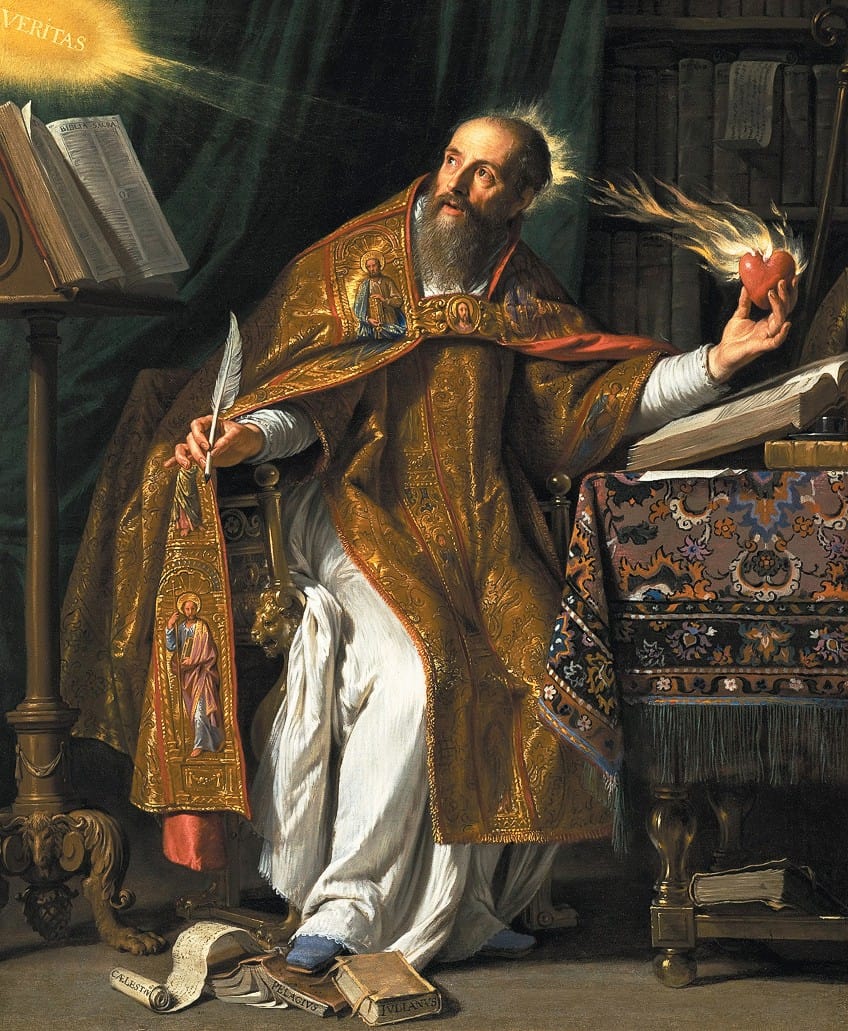
De Champaigne was greatly influenced by other great Baroque masters like Peter Paul Rubens but later developed his approach to painting, which displayed more serious undertones. De Champaigne painted portraits for the French court, including various prominent figures such as King Louis IX.
Today, his works can be viewed in public buildings such as the Basilica of Notre Dame du Port and Val-de-Grâce.
Rembrandt (1606 – 1669)
| Artist Name | Rembrandt Harmenszoon van Rijn |
| Date of Birth | 15 July 1606 |
| Date of Death | 4 October 1669 |
| Nationality | Dutch |
| Places of Residence | Leiden, Amsterdam, the Netherlands |
| Mediums | Painting, printmaking, drawing |
| Famous Artworks | ● The Anatomy Lesson of Dr. Nicolaes Tulp (1632) ● The Storm on the Sea of Galilee (1633) ● The Night Watch (1642) ● The Return of the Prodigal Son (1663 – 1669) ● The Jewish Bride (1665) |
Rembrandt Harmenszoon van Rijn, better known as Rembrandt, was one of the best Dutch Golden Age artists that championed the Baroque painting style through portraiture. His mastery of painting, printmaking, and drawing contributed to his immense success in Dutch painting and is credited with providing many iconic paintings inspired by mythology, self-portraiture, and history.
A man of variety, Rembrandt went on to influence many other Baroque-period painters, including Peter Paul Rubens and Pieter Lastman.
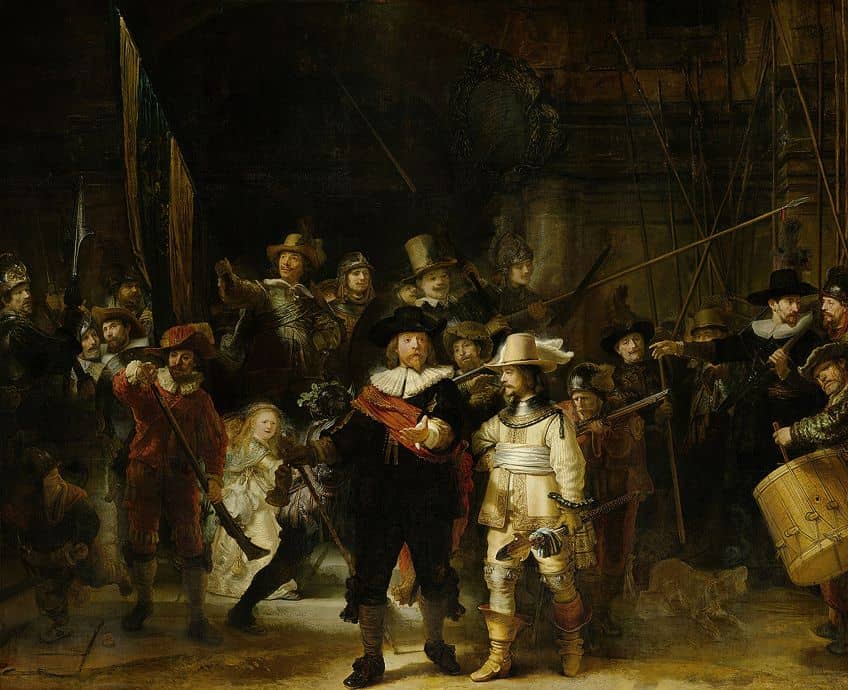
Despite his jumpstart and launch into painting as a Baroque specialist, he faced many financial issues toward the end of his life. In printmaking, Rembrandt provided innovative etching techniques that were admired by all, and his prints reached far and wide across the then-Dutch Republic. According to 20th-century researchers, it is believed that Rembrandt generated over 200 paintings in his life with an even more impressive drawing portfolio of over 2000 works.
Rembrandt’s works can be found in numerous institutions across the world, including the Metropolitan Museum of Art in New York and the Hermitage Museum in St. Petersburg, Russia.
Johannes Vermeer (1632 – 1675)
| Artist Name | Johannes Vermeer |
| Date of Birth | c. 31 October 1632 |
| Date of Death | 15 December 1675 |
| Nationality | Dutch |
| Places of Residence | Delft, the Hague, South Holland, Netherlands |
| Mediums | Painting |
| Famous Artworks | ● The Milkmaid (1658) ● Girl Reading a Letter at an Open Window (1659) ● View of Delft (1661) ● The Concert (1664) ● Girl with a Pearl Earring (1665) ● The Art of Painting (1668) |
Johannes Vermeer is considered a classical master of Baroque-period painting who was made famous for his genre paintings and interior scenes showcasing insights into the lives of middle-class citizens. Recognized across the Netherlands for his contribution to Baroque painting, Vermeer’s 34 surviving paintings were created with much attention to their interior arrangements.
Vermeer also utilized various expensive pigments, which demonstrated the artist’s consideration for his paintings.
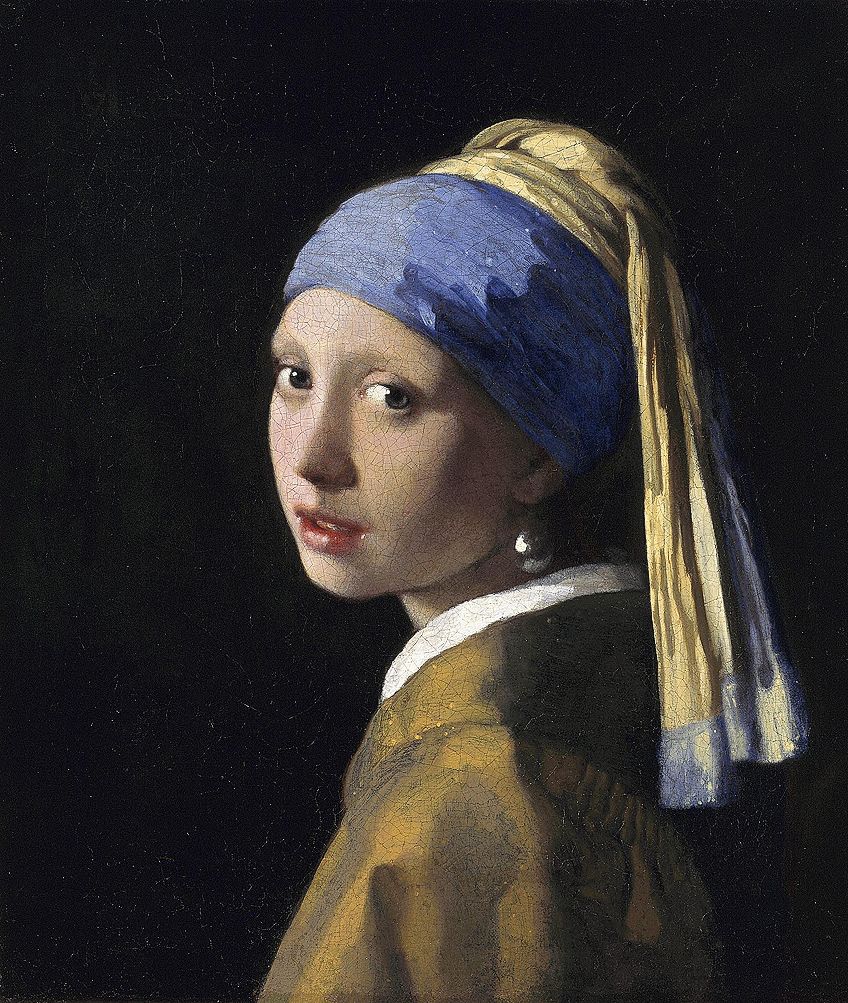
Although Vermeer was a Baroque master, he did not accumulate as much wealth as some of his Baroque-period contemporaries and ended up leaving his family in debt. The development of Vermeer’s artistic style can be seen in the shift from his preference for monochromatic colors to saturated colors and transparent glazes. While there is no record of his painting preparation process, there is an indication of the influence of artists like Leonardo da Vinci on his choice of color and extensive use of the expensive pigment, natural ultramarine blue.
Vermeer followed the observations of Da Vinci, who described the color of different surfaces as reliant upon the colors of other elements in a room, that no object could ever be seen in its natural color.
Mary Beale (1633 – 1699)
| Artist Name | Mary Beale (Mary Cradock) |
| Date of Birth | 26 March 1633 |
| Date of Death | 8 October 1699 |
| Nationality | English |
| Places of Residence | Suffolk, England |
| Mediums | Painting, drawing |
| Famous Artworks | ● Portrait of a Physician (1650-1699) ● Mary Wither of Andwell (1675) ● Portrait of a Young Girl (1681) ● Lady Sadleir (1687) |
Mary Cradock, later known as Mary Beale, was a famous English Baroque portrait painter and writer who was also part of a society of women artists operating in London in the 17th century. Beale also provided us with one of the earliest academic instructional manuscripts on techniques and materials used to create one of her paintings, which was published in 1663.
Beale enjoyed painting in watercolor and oil.
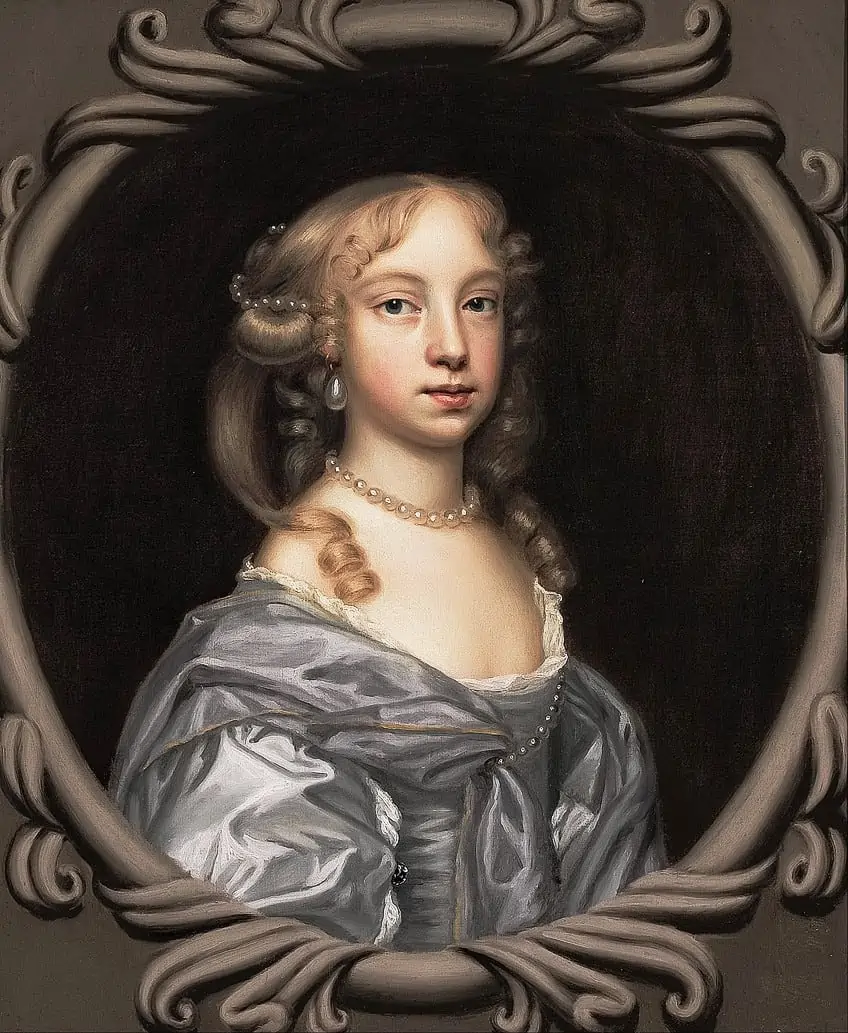
She was praised for the latter by Sir William Sanderson and mentioned in one of his books, Graphice: Or The use of the Pen and Pensil; In the Excellent Art of Painting, published in 1658. Beale was also recognized by the court painter Sir Peter Lely, who was the successor to popular court painter Anthony van Dyck and whose work was the subject of imitation for Beale.
Back then, imitation of another great artist’s work was one of the best ways to practice one’s skills in painting and was a common practice among aspiring artists.
Elisabetta Sirani (1638 – 1665)
| Artist Name | Elisabetta Sirani |
| Date of Birth | 8 January 1638 |
| Date of Death | 28 August 1665 |
| Nationality | Italian |
| Places of Residence | Bologna, Italy |
| Mediums | Painting, printmaking |
| Famous Artworks | ● Timoclea Kills the Captain of Alexander the Great (1659) ● Virgin and Child (1663) ● Portrait of Vincenzo Ferdinando Ranuzzi as Amor (1663) ● Portia Wounding her Thigh (1664) ● The Infant Saint John the Baptist in the Wilderness (1664) |
Having passed away at the young age of 27, Elisabetta Sirani was one of the most famous Italian Baroque painters of her time. Based in Bologna, Sirani specialized in printmaking and painting and even established an academy in support of other women in art. Sirani was trained as a painter from an early age under the guidance of her father Giovanni Andrea Sirani who was a painter for the School of Bologna.
During the time, Bologna was one of the few places in Italy where women artists were well-received and accepted into society.
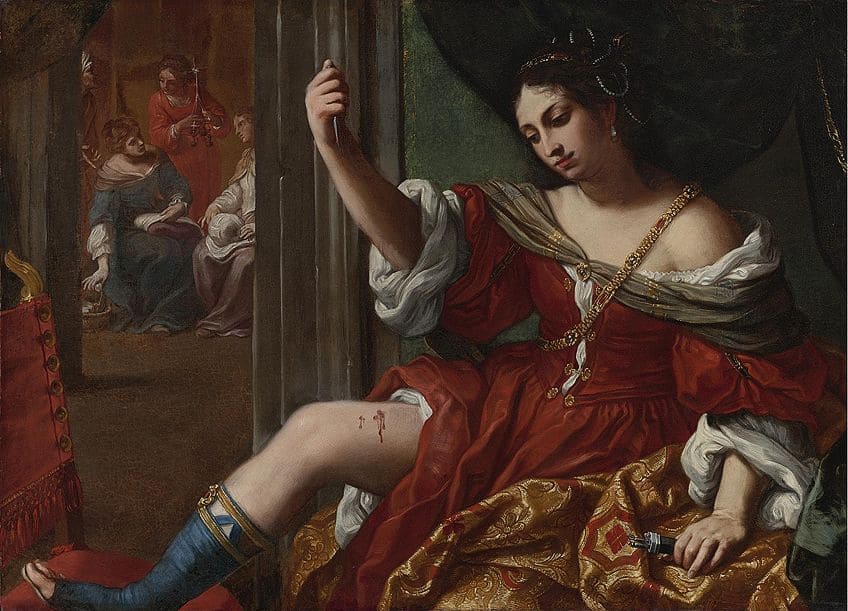
Sirani’s death in 1665 was considered suspicious and her household assistant, Lucia Tolomelli was suspected of poisoning the artist. The charges were, however, later dropped by Sirani’s father. Her artistic style was influenced by the works of artists such as Lorenzo Pasinelli and Cignani with subject matter revolving around religious narratives, legends of saints, and classical mythology.
Louise Moillon (1610 – 1696)
| Artist Name | Louise Moillon |
| Date of Birth | 1610 |
| Date of Death | 21 December 1696 |
| Nationality | French |
| Places of Residence | Paris, France |
| Medium | Painting |
| Famous Artworks | ● Still-Life with Cherries, Strawberries and Gooseberries (1630) ● The Fruit and Vegetable Costermonger (1631) ● Bowl of Lemons and Oranges on a Box of Wood Shavings and Pomegranates (1639) ● Basket of Peaches, with Quinces, and Plums (1696) |
Louise Moillon was one of the most famous French Baroque still life painters during the French Baroque movement of the 17th century. Moillon often made works on wood panels and canvas that illustrated still lifes of different fruit arranged on tables. Her immaculate attention to detail on her still lifes would leave many in awe as she also applied her skill in Trompe l’oei to add texture and a sense of realness to her still lives.
Moillon was one of the first Baroque artists to include both figures and still life in her paintings before 1650.

Moillon’s characteristic style can be seen in her contrast of warm and cool-toned colors combined with influences from French genre painting. The artist’s talent for still life was so profound that she was also compared to older masters like Titian. Today, Moillon’s work can be found in many private collections and museums around the world.
The Baroque period in art history resulted in many of the world’s most famous masterpieces that continue to receive praise for their bold approach to painting and representation of subject matter. Of the many Baroque artists from art history, which is your favorite?
Take a look at our Baroque artists webstory here!
Frequently Asked Questions
What Is Baroque in Art?
Baroque in art refers to the art style defined by the cultural movement that lasted between the late 16th and early 18th centuries. The Baroque style also emphasizes human emotion, facial expression, movement, and contrast in color, shadow, and light across visual disciplines such as painting, sculpture, architecture, and design.
Who Is the Most Popular Baroque Artist?
The most popular Baroque artist is considered to be Michelangelo Merisi da Caravaggio, who was one of the most influential Baroque artists of 16th-century Italy.
What Are the Characteristics of Baroque Paintings?
The characteristics of Baroque paintings include the presence of highly contrasting colors between light and darkness to create a dramatic, cinematic effect. Other characteristics of Baroque paintings include colors such as red, blue, black, and brown and an emphasis on facial expressions for added human emotion.
Jordan Anthony is a Cape Town-based film photographer, curator, and arts writer. She holds a Bachelor of Art in Fine Arts from the University of the Witwatersrand, Johannesburg, where she explored themes like healing, identity, dreams, and intuitive creation in her Contemporary art practice. Jordan has collaborated with various local art institutions, including the KZNSA Gallery in Durban, the Turbine Art Fair, and the Wits Art Museum. Her photography focuses on abstract color manipulations, portraiture, candid shots, and urban landscapes. She’s intrigued by philosophy, memory, and esotericism, drawing inspiration from Surrealism, Fluxus, and ancient civilizations, as well as childhood influences and found objects. Jordan is working for artfilemagazine since 2022 and writes blog posts about art history and photography.
Learn more about Jordan Anthony and about us.
Cite this Article
Jordan, Anthony, “Famous Baroque Artists – A List of the Best Baroque Painters Ever.” artfilemagazine – Your Online Art Source. November 8, 2022. URL: https://artfilemagazine.com/famous-baroque-artists/
Anthony, J. (2022, 8 November). Famous Baroque Artists – A List of the Best Baroque Painters Ever. artfilemagazine – Your Online Art Source. https://artfilemagazine.com/famous-baroque-artists/
Anthony, Jordan. “Famous Baroque Artists – A List of the Best Baroque Painters Ever.” artfilemagazine – Your Online Art Source, November 8, 2022. https://artfilemagazine.com/famous-baroque-artists/.


